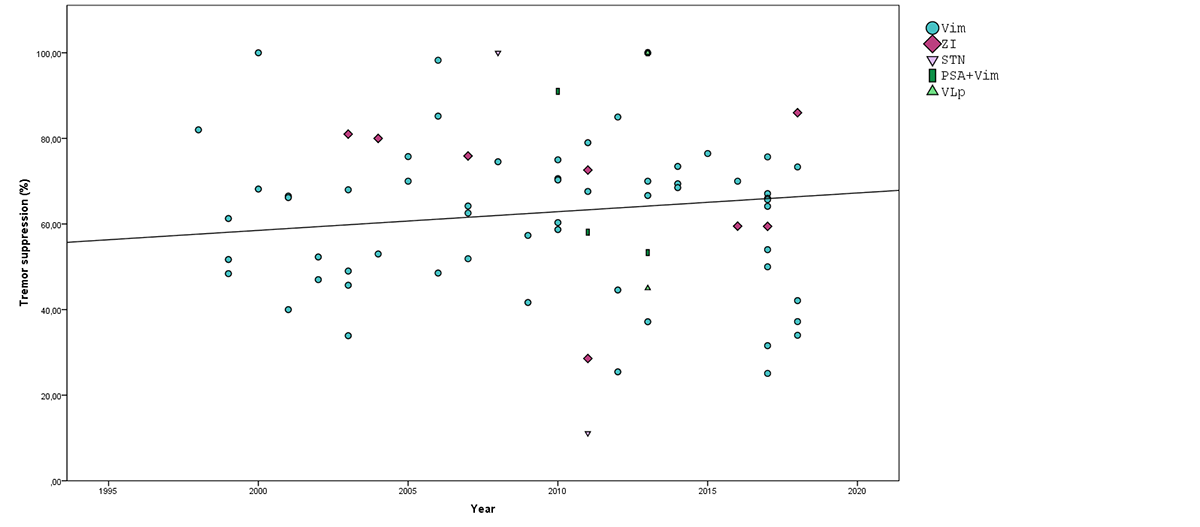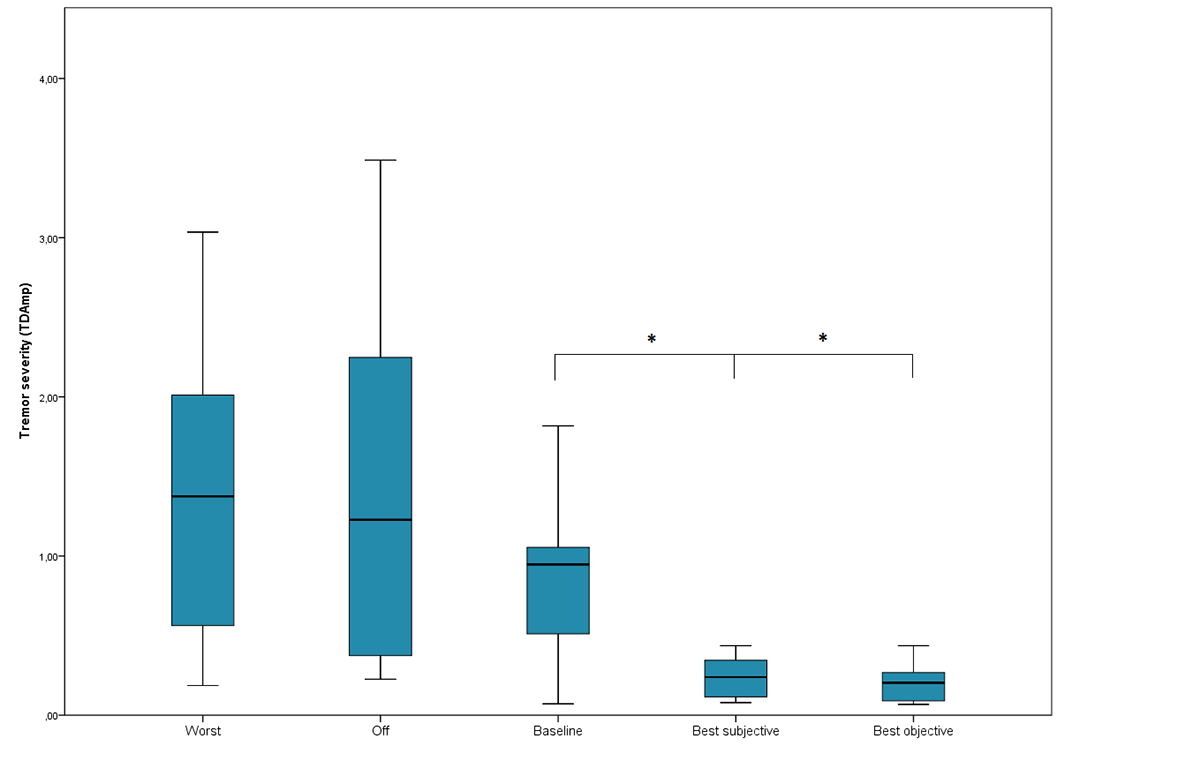Session Information
Date: Tuesday, September 24, 2019
Session Title: Tremor
Session Time: 1:45pm-3:15pm
Location: Les Muses Terrace, Level 3
Objective: To characterize the role of voltage, pulse width, and frequency in programming of Deep Brain Stimulation (DBS) settings for tremor. Additionally, as a proof of concept, we present a novel approach to DBS programming for tremor.
Background: Programming of DBS for tremor remains empirical and laborious. Despite all effort, it is often suboptimal. Addressing the individual anatomy [1] and tremor characteristics [2] may be the key to derive the optimal clinical benefit. In practice however, the virtually infinite amount of parameter combinations and patient fatigue hinder an individualized, comprehensive exploration of the parameter space. The poorly understood relationship between stimulation parameters (voltage, pulse width, and frequency) further emphasizes the need for a robust programming strategy.
Method: We aimed to characterize the outcomes of DBS for Essential Tremor (ET) over time, including the role of the stimulation parameters in tremor suppression. For this, we conducted a meta-analysis to document all available parameters and tremor outcomes. For the experimental titration, 10 random combinations of stimulation parameters were tested in eight ET-DBS patients. Tremor outcomes were characterized by both accelerometer measurements and patient reported outcomes. A telephonic follow-up was conducted to evaluate tremor control on the medium-term.
Results: The outcomes of ET-DBS over time were inconsistent, with an average tremor suppression of merely 63% [figure1]. There appears to be neither a substantial relationship between DBS parameters and tremor suppression, nor between DBS-parameters and side-effects. [Figure2] shows that with the experimental paradigm a significantly improved and sustained tremor suppression compared to baseline was achieved (p = 0.02). Moreover, side-effects were resolved in three out of four patients.
Conclusion: Our pilot data show that with a random programming strategy tremor control with ET-DBS can be improved. In addition, this had a beneficial effect on stimulation-related complications. Next, the potential of deep learning modalities should be explored to refine this novel approach.
References: 1. Schlaier J, Anthofer J, Steib K, et al. Deep brain stimulation for essential tremor: targeting the dentato-rubro-thalamic tract?. Neuromodulation. 2015;18(2):105-12. 2. Cagnan H, Pedrosa D, Little S, et al. Stimulating at the right time: Phase-specific deep brain stimulation. Brain. 2017;140(1):132-145.
To cite this abstract in AMA style:
D. Bogdan, T. van Laar, M. Oterdoom, G. Drost, M. van Dijk, M. Beudel. Optimal Parameters of Deep Brain Stimulation in Essential Tremor: A Meta-Analysis and Novel Programming Strategy [abstract]. Mov Disord. 2019; 34 (suppl 2). https://www.mdsabstracts.org/abstract/optimal-parameters-of-deep-brain-stimulation-in-essential-tremor-a-meta-analysis-and-novel-programming-strategy/. Accessed April 26, 2025.« Back to 2019 International Congress
MDS Abstracts - https://www.mdsabstracts.org/abstract/optimal-parameters-of-deep-brain-stimulation-in-essential-tremor-a-meta-analysis-and-novel-programming-strategy/


